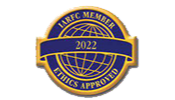How to Leave a Legacy: Charitable Giving in Retirement
Retirement presents a unique opportunity to de-stress, revel in the fruits of your labor, and leave a lasting impact on the world through charitable giving. By harnessing your resources and investing your time, you can contribute to causes that align with your values and promote beneficial societal change, all while leaving less to Uncle Sam.
The Baby Boomer Generation is an inspiring example of remarkable generosity, with each person contributing an average of $1,212 annually. This astonishing statistic represents an impressive 72% of the Baby Boomer population. It constitutes 43% of all donations made yearly. Their unwavering dedication to philanthropy serves as a genuinely commendable model.
This blog will delve into the significance of charitable giving during retirement, offering valuable insights on how to forge a meaningful and enduring legacy through your philanthropic endeavors. Prepare to discover actionable steps that enable you to make a significant difference in the world. Here’s what you should know.
Giving to Charity Beats Giving to Uncle Sam
We know that many clients and friends in our communities are charitably inclined. But as you work on your estate plan, don’t forget to consider charitable giving. Do it the right way and you basically are using some of Uncle Sam’s money. Do it the wrong way and Uncle Sam keeps his share and you are forced to use only your money (or your family’s inheritance) to make the gift.
While the actual gift structure can be technical, the gift concepts are not hard to understand, and the cost is usually minimal compared to the gift amount and the tax benefits to the donor. Donors at every income level can participate.
Reflect on Your Values and Passions
Before embarking on your charitable journey, it is vital to reflect on your values and passions. Take the necessary time to identify the profound reasons that resonate with you, whether it be education, healthcare, or any other area that sparks your passion. By profoundly understanding what truly matters to you, you can select the causes that align with your core beliefs and have a genuine impact through your charitable giving.
Creating a comprehensive giving plan is crucial once you have gained clarity on your values. Start by setting clear and measurable objectives for your philanthropic endeavors, taking into account your financial security. It may be helpful to seek guidance from an experienced financial advisor (preferably a Fiduciary you can trust) who can assist you in designing an effective plan aligned with your goals, ensuring that your giving strategy is optimized.
When donating to charities, conducting thorough research is paramount. Choose reputable organizations with a proven track record of utilizing resources effectively for their intended purpose. Evaluate their financial health, governance practices, and programmatic outcomes. Let’s explore some of the various gifting methods.
Exploring Different Gifting Methods
There are various ways to engage in charitable giving during retirement, each with unique advantages. Some options to consider include:
- Direct Donations: This involves making one-time or recurring cash donations to charitable organizations of your choice. It allows you to impact and support specific programs or initiatives immediately.
- Planned Giving: Planned giving involves making charitable donations as part of your overall financial and estate planning. It often includes strategies like bequests in wills, charitable gift annuities, and charitable remainder trusts. Planned giving allows you to support causes you care about while potentially providing you or your beneficiaries with income or tax benefits.
- Donor-Advised Funds: Donor-advised funds (DAFs) are philanthropic vehicles that allow you to contribute to a fund, receive an immediate tax deduction, and recommend grants to charitable organizations over time. DAFs provide flexibility and strategic giving opportunities, especially for those who want to involve their family in philanthropy.
- Charitable Trusts: Charitable trusts, such as charitable remainder trusts (CRTs) or charitable lead trusts (CLTs), provide unique ways to give while offering potential tax advantages and estate planning benefits. These trusts allow you to provide income to beneficiaries during your lifetime while leaving a lasting legacy for charitable causes.
- In-Kind Donations: In-kind donations involve giving non-cash assets, such as stocks, real estate, or valuable items, to charitable organizations. These donations provide tax advantages and allow you to contribute assets that may benefit the organization’s mission.
Each method has advantages and considerations, and the best choice depends on your circumstances and philanthropic goals. It is recommended to consult with financial advisors or professionals with experience in charitable planning to determine the most suitable gifting method for your specific situation.
Considerations for Tax Deductions on Charitable Giving
Regarding tax deductions for charitable giving, there are a few key factors to remember. Donors who itemize their deductions when filing their income tax returns can benefit from deducting their donations. However, there are limits to the amount that can be removed based on the type of donation and the donor’s adjusted gross income (AGI).
Deductions for donations to public charities, including donor-advised funds, are limited to 50% of the donor’s AGI. For cash gifts, the limit increases to 60% of AGI. When donating appreciated non-cash assets held for more than one year, the limit is 30% of AGI. If the contribution exceeds these limits, the excess amount can be carried over and deducted in the following five tax years.
Individuals who choose to itemize their deductions rather than take the standard deduction do so because their total itemized deductions surpass the typical deduction amount. For 2023, inflation-based adjustments have raised the average deduction amounts to new highs. Single filers can claim a standard deduction of $13,850, while married couples filing jointly can claim a standard deduction of $27,700.
These considerations regarding tax deductions for charitable giving highlight the importance of understanding the rules and limits associated with deducting donations. It is advisable to consult with a tax professional or financial advisor to ensure accurate and compliant reporting while maximizing the benefits of your charitable contributions.
Qualified Charitable Distributions (QCDs)
Speaking of charitable giving and tax planning, there is one very useful tool that many senior citizens are not aware of that can help with both; the “QCD” or Qualified Charitable Distribution.
A QCD is a direct transfer of funds from your IRA custodian, payable to a qualified charity. Use QCDs to manage your required minimum distributions from an IRA. A qualified charitable distribution (QCD) allows individuals who are 70½ years old or older to donate up to $100,000 total to one or more charities directly from a taxable IRA instead of taking their required minimum distributions.
Note: The more recent tax changes centered around the pandemic, specifically the CARES Act, did not change the rules around the QCD.
Let’s revisit some of the most common forms of Charitable Giving in more detail…
Donations of Appreciated Assets-Stocks
A simple and often overlooked method of donation involves directly giving appreciated stocks to a charity. Instead of selling the stocks first and then donating the proceeds, this approach provides the donor with an income tax deduction for the appreciated value, eliminates capital gains tax, and provides the charity with the larger, appreciated sum.
Donations of Life Insurance
Life insurance can be gifted to charity in three ways: naming the charity as the beneficiary (which provides no tax benefits), donating an existing policy (which provides an income tax deduction equivalent to the cash value), or allowing the charity to own and be the beneficiary of a policy on your life while making yearly donations to cover the premiums (which provides an income tax deduction equivalent to the annual premium donation). Donating life insurance is an excellent way to enhance the value of your gift.
Charitable Remainder Trusts
In a charitable remainder trust, the donor places appreciated assets into a trust and receives income. When the trust term ends, the remaining balance goes to the chosen charity. The donor’s income tax deduction is equal to the present value of the remainder gift, any appreciation is exempt from capital gains tax, and the asset is removed from the donor’s estate, thereby avoiding any estate taxes. This arrangement can be taken further by using the income to pay premiums on a life insurance policy that designates the charity as a beneficiary.
Charitable Lead Trusts
A charitable lead trust is utilized when a donor has an asset not needed during his or her lifetime, often a vacation home, but one the donor wishes for heirs to inherit. The charity receives income from the property, which ideally continues to appreciate for the benefit of the trust beneficiaries to whom it will be distributed upon the expiration of the trust term. Charitable lead trusts follow a complex set of rules governing the type and amount of the charitable tax deductions permitted, but given the right circumstances, it can benefit both the charity and the donor.
Donations of IRA and Pension Funds
Currently, only bequests of these assets (gifts made through a will) are eligible for favorable tax treatment, which avoids income and estate tax. However, gifts of these assets can be a vital part of charitable planning for a donor with a diverse portfolio. Otherwise, the income tax on the undistributed income and the estate tax would substantially reduce the value of these gifts to heirs.
Charitable Gift Annuity
This form of gift is popular among seniors and retirees who want to donate to charity but can’t afford to lose the necessary income. The interest rate allowed increases with the age of the donor when the annuity is established. For instance, a 75-year-old would receive a fixed 7.1%, an 80-year-old would receive a fixed 8.05%, and an 85-year-old would receive a fixed 9.5%. The income is guaranteed for life, and when the donor passes away, the designated charity receives the remainder.
Please note, there are many forms of Annuities available, but not all are created equal and some carry a high risk factor (like Variable Annuities). Always consult with your financial advisor before exploring your options.
Bequests
Finally, and importantly, creating a bequest (a provision in your will) to a charity is perhaps the most efficient and least expensive way to make a planned charitable gift. The charity could receive a specific amount, a particular asset (such as an IRA or pension asset), a percentage of the estate, or a part of the residue. Even those with modest incomes can leave a legacy.
Consider Volunteering or Non-Monetary Contributions
Remember that charitable giving does not always have to be monetary. Retirement offers an excellent opportunity to dedicate your time, skills, and knowledge to philanthropic organizations. Consider volunteering, serving on boards, mentoring others, or offering pro bono services. Your experience and knowledge can be transformative.
Engaging your family and loved ones in philanthropy can deepen the impact of your giving and instill a spirit of generosity across generations. Encourage open discussions about charitable values, involve family members in decision-making, and create opportunities for shared giving experiences. This can create a lasting family legacy of giving back and making a positive difference.
Final Thoughts
Leaving a legacy through charitable giving is a powerful way to create positive change in the world and inspire others to do the same. As you plan for retirement and consider the legacy you want to leave behind, remember that every contribution can significantly impact, no matter how big or small.
Agemy Financial Strategies is dedicated to providing knowledgeable guidance on charitable giving during retirement. We understand the importance of your generous contributions and the lasting impact they can have. Our team of Fiduciary Advisors is here to assist you every step of the way, ensuring that your retirement years are filled with immense fulfillment. With our guidance, you can leave a meaningful legacy that will endure for years.
Contact us today to get started and schedule your complimentary strategy session here.







Leave a Reply
Want to join the discussion?Feel free to contribute!